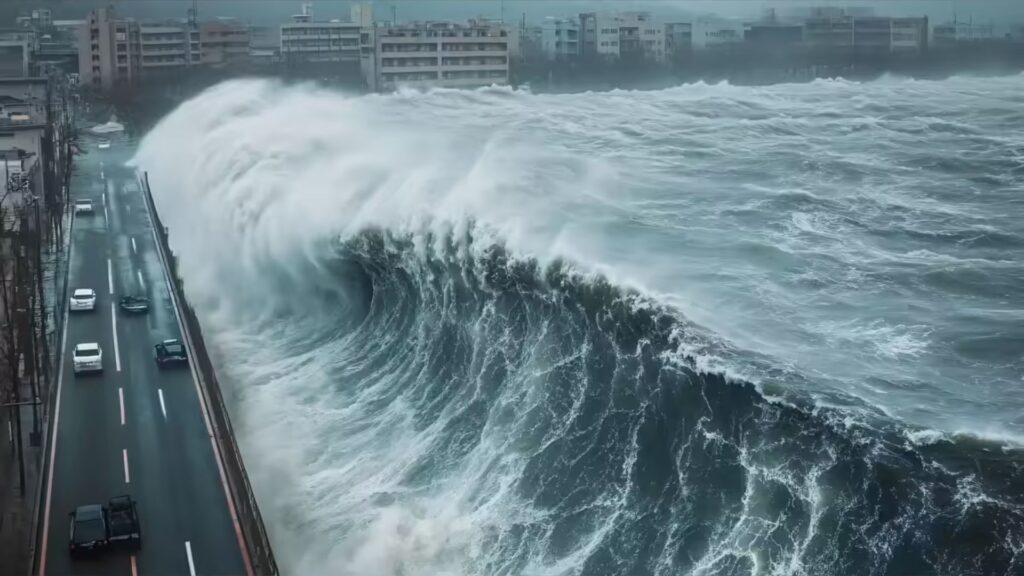In a decisive move to strengthen national disaster resilience, Japan has approved a comprehensive new disaster preparedness plan aimed at mitigating the potentially catastrophic effects of a future Nankai Trough megaquake. This new strategy, finalized by the Central Disaster Management Council and led by Prime Minister Fumio Kishida, marks a major overhaul of Japan’s national readiness framework and replaces the previous guidelines established in 2014.
The Looming Threat: Nankai Trough Explained
The Nankai Trough is an undersea subduction zone located off Japan’s southern Pacific coast, where the Philippine Sea Plate slides beneath the Amurian Plate. Historically, this region has been the origin of some of Japan’s most destructive earthquakes, known as Nankai megathrust quakes.
Major past events include the 1707 Hōei earthquake, the twin Ansei-Tōkai and Ansei-Nankai quakes of 1854, and the devastating 1944 and 1946 events. Experts warn that, based on seismic cycles ranging between 90 to 200 years, another major quake is likely within the coming decades.
This anticipated earthquake could trigger massive tsunamis and cause widespread devastation in densely populated coastal regions such as Osaka, Nagoya, and Shizuoka.
Core Objectives of the 2025 National Strategy
The newly approved plan sets clear targets to reduce human and economic losses in the event of a Nankai Trough rupture. Key goals include:
- Cutting projected fatalities by 80%
- Reducing structural damage by 50%
- Improving evacuation and early warning systems
- Strengthening infrastructure in high-risk zones
This dual-focused strategy addresses both seismic activity and tsunami impacts, reflecting the dual nature of the threat.
Detailed Measures and Annual Oversight
A total of 200 action-oriented targets have been outlined, to be implemented and reviewed annually. These measures include:
- Retrofitting older buildings and homes to meet earthquake-resilient standards
- Expanding the number and height of tsunami evacuation towers
- Deploying advanced AI and satellite-based early warning technologies
- Conducting more frequent evacuation drills in vulnerable areas
- Stockpiling emergency supplies in coastal evacuation shelters
Local governments will carry out these initiatives with funding and logistical assistance from the central government.
Grim Projections: The Cost of Inaction
According to new projections released in March 2025 by Japan’s Cabinet Office, a worst-case scenario involving a magnitude 9-class quake along the Nankai Trough could result in:
- Up to 298,000 deaths, including tsunami casualties
- Destruction of approximately 2.35 million buildings
- Economic losses exceeding ¥220 trillion (roughly $1.4 trillion USD)
- Tsunami waves over 30 meters in some coastal areas
These figures incorporate insights from past disasters, notably the 2011 Great East Japan Earthquake, which claimed nearly 20,000 lives.
Infrastructure and Social Preparedness
Infrastructure Initiatives:
- By 2030, high-risk housing in coastal prefectures will be fully retrofitted.
- Public infrastructure such as hospitals, transport hubs, and schools will be upgraded for seismic resistance.
- Emergency communication systems will be modernized for improved coordination during crises.
Community Engagement:
- Biannual evacuation drills in schools and workplaces will be made mandatory.
- Community programs will be developed to aid the elderly and people with disabilities during emergencies.
- Enhanced mobile alert systems will provide location-specific warnings.
Oversight and Collaboration
The Cabinet Office’s Central Disaster Management Council will oversee the implementation of the plan, working in coordination with the Japan Meteorological Agency (JMA), the Ministry of Land, Infrastructure, Transport and Tourism (MLIT), the Fire and Disaster Management Agency (FDMA), and municipal authorities.
Progress on each of the 200 targets will be reported annually to the Japanese Parliament, ensuring transparency and public accountability.
Public Perception and Unofficial Predictions
The strategy has also gained public attention amid growing anxiety fueled by unofficial predictions. Ryo Tatsuki, a manga artist dubbed the “New Baba Vanga,” recently warned of a massive seabed crack forming between Japan and the Philippines, leading to an unprecedented tsunami. While these claims lack scientific support, they have stirred widespread discussion on social media, reinforcing the urgency for readiness.
Japan’s Path Forward
Japan’s latest disaster preparedness plan represents a landmark effort to protect lives and property in the face of a high-probability, high-impact natural event. By combining scientific research, technological innovation, and grassroots engagement, Japan aims to create a resilient society capable of withstanding one of the most severe threats in its seismic history.
As the nation braces for what experts see as an inevitable future quake, the success of this plan will depend on the commitment of both government institutions and everyday citizens to foster a culture of continuous preparedness.

